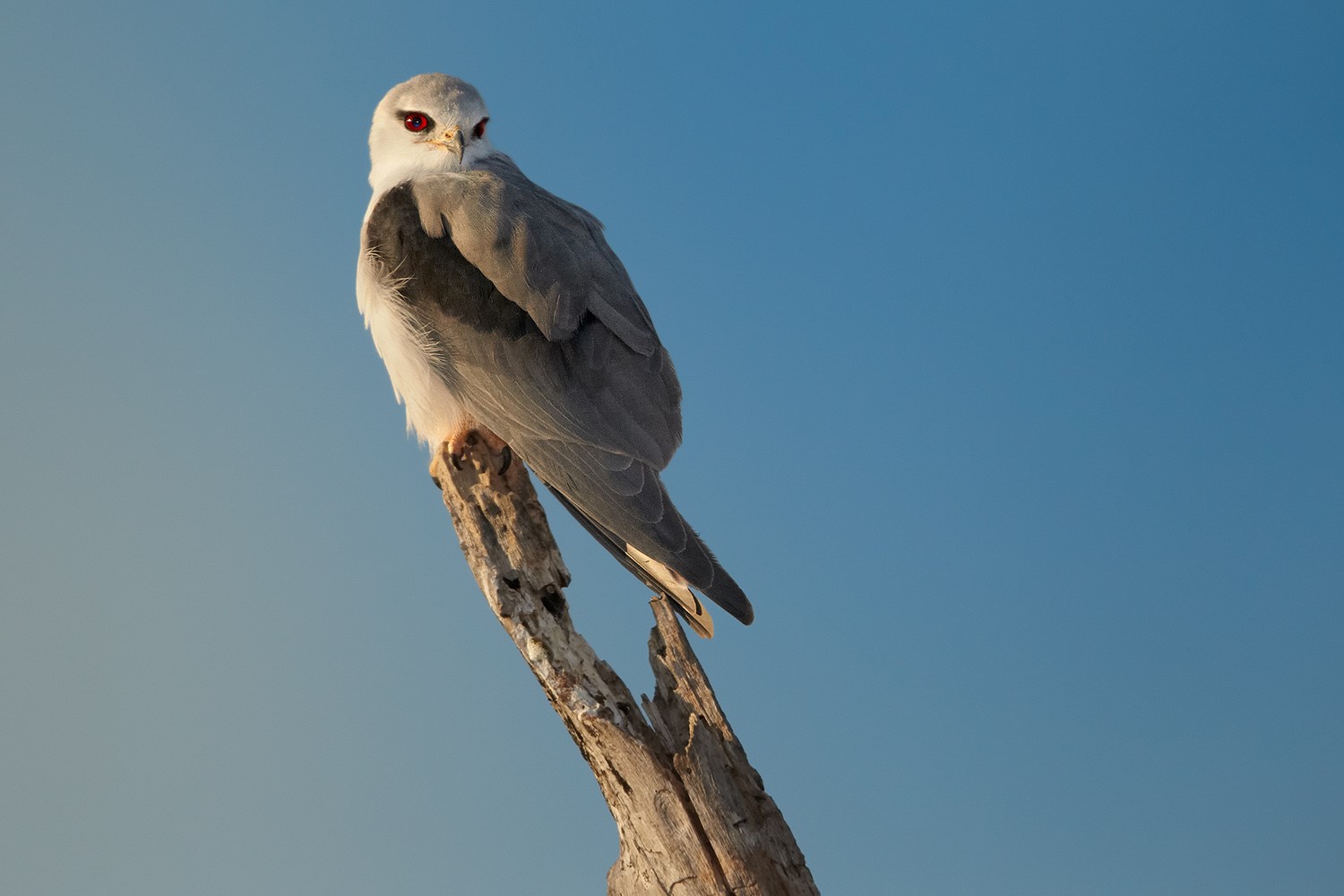| Citation |
BirdLife International 2016. Elanus caeruleus. The IUCN Red List of Threatened Species 2016: e.T22695028A86874970. http://dx.doi.org/10.2305/IUCN.UK.2016-3.RLTS.T22695028A86874970.en. Downloaded on 30 September 2019. |
Description |
JUSTIFICATION
This species has an extremely large range, and hence does not approach the thresholds for Vulnerable under the range size criterion (Extent of Occurrence <20,000 km2 combined with a declining or fluctuating range size, habitat extent/quality, or population size and a small number of locations or severe fragmentation). The population trend appears to be stable, and hence the species does not approach the thresholds for Vulnerable under the population trend criterion (>30% decline over ten years or three generations). The population size is extremely large, and hence does not approach the thresholds for Vulnerable under the population size criterion (<10,000 mature individuals with a continuing decline estimated to be >10% in ten years or three generations, or with a specified population structure). For these reasons the species is evaluated as Least Concern.
HABITAT AND ECOLOGY
Behaviour This species is widely distributed from 44°N to 35°S, across the Afrotropical and Indomalayan regions, with marginal occurrence in the Western Palearctic and north Australasia (Ferguson-Lees and Christie 2001). Population densities range from rare to locally abundant. Numbers are increasing in Iberia (Snow and Perrins 1998), coinciding with the clearance of oak woodlands and understory vegetation (Shirihai et al. 2000). It is very rare in north west Africa and north Borneo, and has decreased in Java (Ferguson-Lees and Christie 2001). The species is generally sedentary in the Palearctic, with some movements to more open habitats during winter (Snow and Perrins 1998). Juveniles will generally disperse from natal grounds. In tropical regions individuals are more nomadic, undertaking seasonal migrations with the rains and in response to prey numbers. Movements can be eruptive in both tropical Africa and India (Ferguson-Lees and Christie 2001). The species is recorded as a vagrant in the Middle East, but there are no records of regular passage in this region (Shirihai et al. 2000). Habitat The species occupies relatively open habitats at a range of altitudes (0-750 m in West Palearctic; 0-2,000 m in southern Asia; 0-3,000 m in Africa), ranging from semi-desert to forest margins and clearings within densely forested areas. It is generally absent in continuous forest tracts and steep mountainous areas and will opportunistically use areas cleared after fires (Snow and Perrins 1998). In the non-breeding season, communal roosts in trees or reed beds have been known to host up to 500 individuals (although most frequently 15-20), with birds dispersing to individual territories during the day (del Hoyo et al. 1994). Diet The species’ prey comprise small grassland mammals (up to 90g), reptiles, birds and insects, hunting its quarry from both a perch and hovering vantage, as well as quartering the ground and hawking insects in flight. It will often hunt during dawn and dusk (del Hoyo et al. 1994). Breeding Site Nests are made of small twigs lined with finer material, and are located in tree branches 3-20m above the ground, usually in open areas (del Hoyo et al. 1994). The same tree may be occupied in successive years although new nests are usually built each year. The breeding season spans February to August in the West Palearctic region, whilst in Africa and India breeding begins at the end of the wet season, with the species double-brooding according to food availability (Ferguson-Lees and Christie 2001). Management Information Although there has been a recent expansion of the species’ range in northern Egypt, historically numbers have fluctuated, possibly as a result of the application of rodent poisons and pesticides which may be in use throughout its range. In general, the species is able to exploit disturbed or cleared areas and increase its breeding productivity under favourable prey conditions and so, on the whole, it is successful.
THREATS
The species is likely to be threatened by the use of rodenticides and pesticides within its range (Ferguson-Lees and Christie 2001). Locally, within Europe, populations are heavily impacted by annual rainfall. In eastern Europe (e.g. in Greece, Hungary and Bulgaria) declines are attributed to the loss of wetland habitats (Pierce and Boesman 2013). Disturbance by people and fluctuating water levels are also a threat to the species (Tinarelli 1992). In some areas, housing and commercial development threaten the wetland habitats of this species (Goutner and Papakostas 1992).
CONSERVATION ACTIONS
Conservation Actions Underway
The species is listed on Annex I of the EU Birds Directive and Annex II of the Bern Convention. A network of protected wetlands in western Europe is providing secure breeding and feeding grounds for the species (Pierce and Boesman 2013).
Conservation Actions Proposed
The following information refers to the speciess European range only: Pollution of wetland habitats, land reclamation, infrastructure development and human disturbance at breeding sites needs to be stopped. Abandonment of salt pans should be reversed. |

